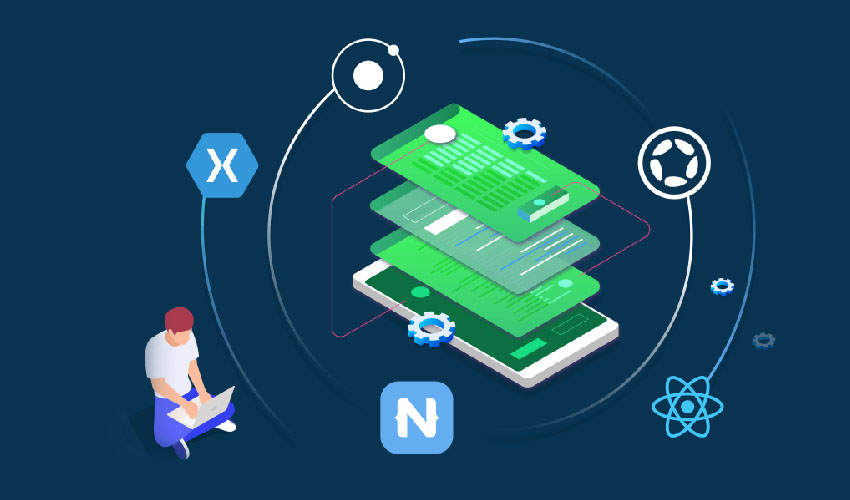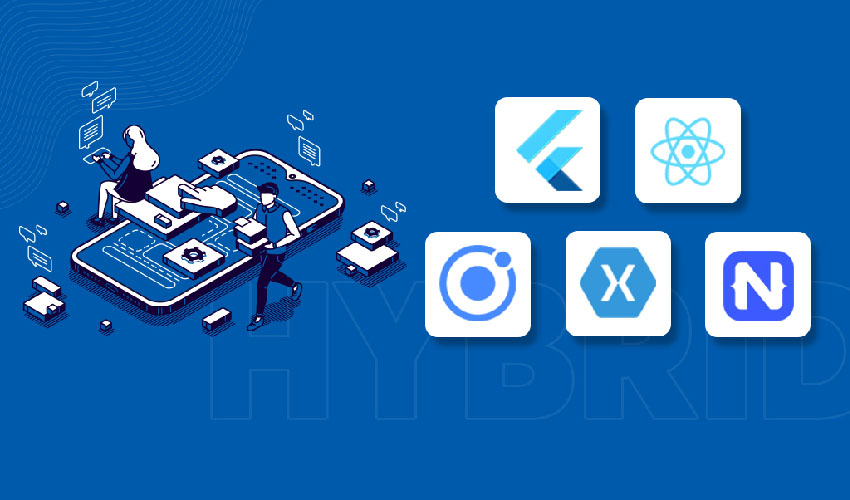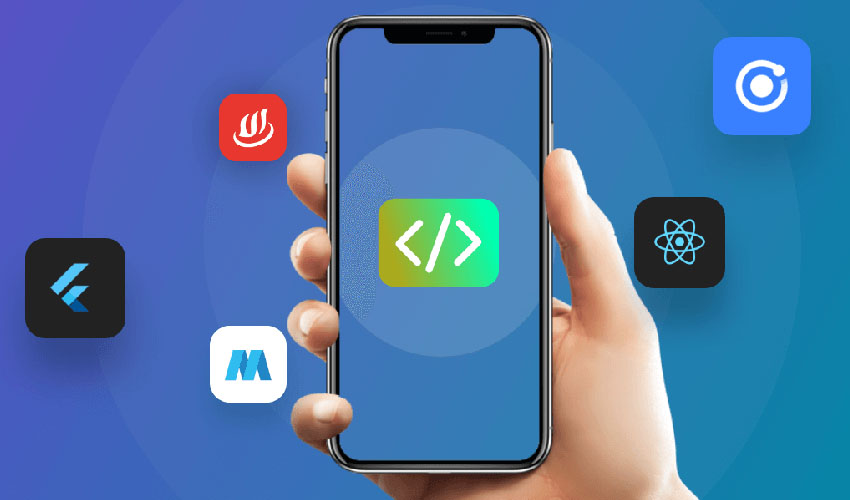Table of Contents
Understanding Hybrid App Development Frameworks
In the ever-evolving landscape of mobile applications, hybrid app development has emerged as a popular solution to bridge the gap between native and web applications. These frameworks leverage a combination of web technologies, such as HTML, CSS, and JavaScript, to create applications that offer the advantages of both worlds. Understanding the nuances and variations among these frameworks is crucial for developers and businesses aiming to build versatile, efficient, and scalable applications.
Evolution and Significance of Hybrid App Development:
Hybrid app development gained traction as businesses sought efficient ways to create applications that could run seamlessly across multiple platforms while minimizing development efforts and costs. Unlike native apps that are built specifically for a particular operating system (OS), hybrid apps utilize a single codebase that can be deployed on various platforms, including iOS, Android, and even web browsers.
Frameworks in the Hybrid App Development Arena:
- React Native:
- Overview: Developed by Facebook, React Native is a widely-used framework known for its efficiency and performance. It enables developers to create native-like apps using JavaScript and React, offering a rich set of components and libraries.
- Strengths: React Native’s modular and intuitive architecture allows for rapid development, code reusability, and a native-like user experience. Its strong community support and extensive documentation enhance its appeal.
- Considerations: While React Native is highly efficient, its performance may vary for complex applications, requiring native modules for certain functionalities.
- Flutter:
- Overview: Flutter, an offering from Google, has gained popularity for its ability to create high-performance apps with a single codebase. It employs Dart programming language and a rich set of pre-built widgets.
- Strengths: Flutter’s hot reload feature facilitates real-time code changes, speeding up the development process. Its customizable widgets and excellent performance across platforms contribute to its appeal.
- Considerations: While Flutter excels in creating visually appealing apps, its reliance on Dart might require a learning curve for developers unfamiliar with the language.
- Ionic:
- Overview: Built on AngularJS and Apache Cordova, Ionic is renowned for its simplicity and ease of use. It empowers developers to build cross-platform apps using web technologies.
- Strengths: Ionic offers a vast array of pre-designed components, a robust CLI (Command Line Interface), and a vibrant community. Its integration with various plugins enhances its functionality.
- Considerations: While Ionic simplifies app development, performance may be a concern for highly complex applications compared to React Native or Flutter.
Key Considerations in Choosing a Hybrid App Development Framework:
- Performance and User Experience:
- Assessing the performance metrics and user experience across various devices and operating systems is crucial. Factors like app speed, responsiveness, and native-like feel play a significant role in framework selection.
- Community Support and Documentation:
- A thriving community provides invaluable support, offering solutions to issues, updates, and best practices. Comprehensive documentation aids developers in leveraging the framework’s capabilities effectively.
- Scalability and Maintenance:
- Evaluate the framework’s scalability in line with the app’s potential growth. Additionally, consider the ease of maintenance, updates, and long-term support provided by the framework.
- Testing and Debugging Tools:
- Robust testing and debugging tools streamline the development process by identifying and resolving issues efficiently. Frameworks offering comprehensive toolsets contribute to smoother development cycles.
- Cost Consideration:
- Analyze the overall development cost, including licensing fees, development time, and resources required for each framework. This assessment should align with the project’s budgetary constraints.
The Decision-Making Process:
- Project Assessment:
- Begin by thoroughly understanding the specific requirements and objectives of the project. Consider factors like app complexity, target audience, feature set, and time-to-market expectations.
- Framework Evaluation:
- Conduct an in-depth analysis of each framework based on performance, community support, scalability, available resources, and alignment with the project requirements.
- Prototype Development:
- Building prototypes or proof-of-concepts using different frameworks can offer hands-on experience, aiding in the decision-making process.
- Iterative Approach:
- Embrace an iterative approach that allows for continuous evaluation and adaptation. This involves testing frameworks, gathering feedback, and refining the selection based on evolving project needs.
Evaluation Criteria for Framework Selection
Selecting the right framework for hybrid app development is akin to laying a sturdy foundation for a building. It dictates the app’s performance, scalability, and overall success. With a myriad of options available, a comprehensive evaluation becomes crucial to make an informed decision. This guide explores a detailed set of criteria to assist in selecting the most suitable framework for hybrid app development.
- Project Requirements Analysis: Understand the specific needs and goals of your project. Factors such as the app’s complexity, target audience, expected user interactions and integration with native device features will profoundly impact the choice of a framework.
- Platform Support and Compatibility: Assess the framework’s ability to support multiple platforms (iOS, Android, etc.) seamlessly. Check for compatibility with various devices, screen sizes, and operating system versions to ensure a consistent user experience across platforms.
- Performance Metrics: Evaluate the performance benchmarks of each framework. Factors such as app speed, responsiveness, memory consumption, and battery usage are critical for ensuring a smooth and efficient user experience.
- Native-Like User Experience: Determine the framework’s capability to provide a native-like experience. This includes evaluating UI/UX components, animations, and interactions to ensure the app feels native while utilizing web technologies.
- Developer Experience and Learning Curve: Consider the learning curve associated with each framework. Assess the availability of resources, documentation, and community support. A framework with a shallow learning curve and comprehensive resources can expedite development.
- Community Support and Ecosystem: A thriving community is invaluable. Analyze the size, activity level, and engagement within the framework’s community. Robust community support ensures access to solutions, updates, and third-party integrations.
- Scalability and Flexibility: Anticipate your app’s growth and evaluate the framework’s scalability. Ensure that the chosen framework can accommodate future updates, feature additions, and increased user base without compromising performance or stability.
- Security Measures: Security is paramount in app development. Examine the framework’s built-in security features, such as data encryption, secure authentication methods, and protection against common vulnerabilities.
- Testing and Debugging Tools: Robust testing and debugging tools are indispensable for a smooth development process. Evaluate the availability and effectiveness of tools provided by each framework to identify and resolve issues efficiently.
- Cost Considerations: Factor in the overall cost associated with the framework. Consider licensing fees, development time, maintenance costs, and any additional resources required. Opt for a framework that aligns with your budget and long-term financial considerations.
- Third-Party Integration and Plugins: Assess the ease of integrating third-party services and plugins within the framework. Compatibility with various APIs and libraries simplifies the incorporation of additional functionalities.
- Documentation and Updates: Thorough documentation and regular updates are essential. Evaluate the availability and quality of documentation to facilitate smooth development and ongoing maintenance.
Popular Hybrid App Development Frameworks
here’s an in-depth exploration of some of the most popular hybrid app development frameworks available today, elaborating on their key features, advantages, and ideal use cases.
React Native
Overview: React Native, developed by Facebook, has gained immense popularity for its ability to build high-performance apps using JavaScript and React. It allows developers to create native-like experiences for both iOS and Android platforms while leveraging a single codebase.
Key Features:
- Reusable Components: React Native utilizes reusable components, ensuring consistent UI across platforms and faster development cycles.
- Native Performance: It offers near-native performance by rendering code components directly to native APIs.
- Hot Reloading: Developers can make real-time code changes and witness the results instantly without restarting the app.
- Large Community Support: A vast community of developers actively contributes to the framework, offering extensive support and a plethora of libraries.
Ideal Use Cases:
- Apps that prioritize performance without compromising on native-like user experience.
- Projects where rapid development and code reusability are critical.
- Businesses aiming to create cross-platform apps with a smaller development team.
Flutter
Overview: Flutter, an open-source UI toolkit from Google, empowers developers to craft natively compiled applications for mobile, web, and desktop from a single codebase using the Dart programming language.
Key Features:
- Widgets: Flutter boasts a rich set of customizable widgets for building complex UI designs.
- Hot Reload: Similar to React Native, Flutter allows developers to instantly view code changes.
- High Customizability: It offers extensive customization options for creating unique and pixel-perfect designs.
- Strong Community and Support: Flutter enjoys growing community support and a dedicated set of tools for development.
Ideal Use Cases:
- Applications that demand a high level of customization and intricate UI/UX designs.
- Projects requiring rapid development with a single codebase across multiple platforms.
- Startups and businesses aiming for visually appealing, high-performance apps.
Ionic
Overview: Ionic is an HTML5 mobile app development framework that primarily focuses on the front-end user experience. It combines AngularJS, HTML, CSS, and JavaScript to build cross-platform apps.
Key Features:
- UI Components: Ionic offers a library of pre-designed components for building interactive and engaging user interfaces.
- Platform Adaptability: Apps built with Ionic seamlessly adapt to different platforms and devices.
- Easy Learning Curve: Developers familiar with web technologies can quickly adapt to Ionic’s framework.
- Cordova Plugins: It integrates with Cordova plugins to access device features and native functionalities.
Ideal Use Cases:
- Projects prioritizing a strong UI/UX experience across various devices.
- Applications that heavily rely on web technologies and aim for cross-platform compatibility.
- Startups or small teams looking for an easy-to-learn framework with a robust community.
Xamarin
Overview: Xamarin, acquired by Microsoft, is a robust framework for building cross-platform apps using C#. It provides a single codebase that can be deployed across different platforms.
Key Features:
- Native Performance: Xamarin offers near-native performance by compiling code into native binaries.
- Code Sharing: Developers can share a significant portion of code across iOS, Android, and Windows platforms.
- Integration with Visual Studio: It seamlessly integrates with Microsoft’s Visual Studio, enhancing the development environment.
- Microsoft Support: Being a Microsoft product, Xamarin enjoys strong support and integration with other Microsoft technologies.
Ideal Use Cases:
- Enterprise-level applications that require extensive device functionality and native performance.
- Projects with a large existing codebase in C# or .NET.
- Developers proficient in C# and looking for a robust cross-platform solution.
Framework Selection Considerations
When choosing a hybrid app development framework, several factors should be considered:
- Performance: Evaluate the framework’s performance metrics, ensuring it meets your app’s requirements.
- Development Speed: Consider the speed of development and ease of maintenance.
- Community Support: A strong community ensures quick problem-solving and continuous updates.
- Cost: Assess the overall development cost, including licensing fees and resource investment.
- Native Features: Check the framework’s ability to access device-specific functionalities.
Hybrid Frameworks for Different App Types
Mobile applications have evolved into a cornerstone of modern businesses, catering to various needs, from e-commerce to entertainment and beyond. Hybrid frameworks, blending the strengths of both native and web applications, offer a compelling solution for app development across different categories. Let’s explore how various hybrid frameworks align with distinct types of applications:
1. E-Commerce Apps:
E-commerce applications demand a seamless user experience, high performance, and real-time updates. Frameworks like React Native and Flutter shine here. React Native’s ability to render a native-like experience coupled with reusable components makes it a strong contender. Flutter, with its rich widgets and hot reload feature, enables rapid development and customization, crucial for dynamic e-commerce platforms.
2. Social Networking Apps:
Social apps thrive on real-time interactions, rich media content, and engaging UI/UX. Ionic and React Native offer viable options. Ionic, built on AngularJS, allows for quick prototyping and seamless integration with various social APIs. React Native’s flexibility and vast community support make it suitable for crafting interactive social platforms.
3. Gaming Apps:
Gaming apps necessitate high performance, rich graphics, and smooth animations. Flutter stands out with its customizable widgets and efficient rendering capabilities. Its ability to provide a consistent experience across platforms, along with a fast development cycle, is ideal for gaming app development.
4. Content-Based Apps:
Content-centric apps like news, blogs, or media platforms require smooth navigation and content delivery. Ionic and React Native cater well to such apps. Ionic’s simplicity and ease of use make it a viable choice for content-focused applications. React Native’s performance and ability to handle media-rich content make it suitable for creating engaging content-driven apps.
5. Enterprise Apps:
Enterprise applications prioritize security, scalability, and robust performance. Ionic and React Native are popular choices. Ionic’s integration with Cordova plugins and AngularJS provides a robust foundation for enterprise-grade apps. React Native’s efficiency and vast community support make it an attractive option for developing scalable enterprise solutions.
6. Utility Apps:
Utility apps, such as productivity tools or utilities, require a seamless user experience and efficient functionality. React Native and Flutter offer compelling solutions. React Native’s ability to access native APIs and its performance optimization make it suitable for utility apps. Flutter’s hot reload feature facilitates rapid development and debugging, crucial for utility-based applications.
7. Healthcare & Fitness Apps:
Apps in this domain need to handle sensitive data and provide a smooth user experience. React Native and Flutter excel here. React Native’s capability to integrate with third-party libraries for health-related functionalities is advantageous. Flutter’s customizable widgets and quick development cycle can efficiently cater to the requirements of healthcare and fitness apps.
8. Travel & Navigation Apps:
These apps demand real-time data, smooth navigation, and device-specific functionalities. Ionic and React Native fit the bill. Ionic’s ease of use and integration with maps and navigation APIs make it suitable for travel apps. React Native’s native-like performance and access to device features align well with the needs of navigation apps.
Cost Analysis and Resource Management
In the ever-evolving landscape of business, strategic cost analysis and resource management stand as crucial pillars for organizational success. Managing costs effectively while optimizing resources is fundamental for sustainability, growth, and maintaining a competitive edge. This article delves into the intricate realm of cost analysis and resource management, exploring their significance, methodologies, and strategic implementations within modern business environments.
Introduction: The Significance of Cost Analysis and Resource Management
Cost analysis involves the systematic examination of expenses incurred in various business operations. It goes beyond mere accounting and delves into understanding the underlying drivers, identifying areas of inefficiency, and devising strategies to optimize expenditure. On the other hand, resource management encompasses the allocation, utilization, and monitoring of resources—be it human, financial, technological, or infrastructural—to maximize efficiency and productivity.
Understanding Cost Analysis
- Cost Classification and Categorization: Businesses categorize costs into fixed, variable, direct, and indirect costs. This segmentation aids in understanding cost behavior, allowing for targeted strategies to control and optimize expenses.
- Cost-Volume-Profit Analysis (CVP): CVP analysis helps in understanding the relationship between costs, sales volume, and profits. It assists in determining break-even points, pricing strategies, and forecasting financial outcomes.
- Activity-Based Costing (ABC): ABC allocates costs based on activities performed, offering a more accurate view of expenses associated with specific processes or products. It enables better decision-making by attributing costs more precisely.
- Cost Control and Reduction Strategies: Implementing cost control measures involves identifying inefficiencies, renegotiating contracts, optimizing processes, and adopting technologies to streamline operations and reduce expenses without compromising quality.
Resource Management Strategies
- Human Resource Management: Efficient utilization of human resources involves proper recruitment, training, and retention strategies. Additionally, fostering a positive work culture and employee engagement significantly impacts productivity.
- Financial Resource Management: Prudent financial management includes budgeting, forecasting, investment strategies, and managing cash flow. Effective financial planning ensures stability and facilitates strategic business decisions.
- Technological Resource Management: Leveraging technology for process automation, digitization, and adopting innovative tools improves efficiency and fosters competitiveness. Regular upgrades and adaptation to technological advancements are imperative.
- Infrastructure and Physical Resource Management: Efficient utilization of physical resources involves optimizing space, equipment, and facilities. Sustainable practices and energy-efficient measures also contribute to cost savings and environmental responsibility.
Strategic Implementation in Business Environments
- Cost Leadership Strategy: Adopting a cost leadership approach involves minimizing costs to offer products or services at competitive prices. This strategy requires stringent cost control measures and operational efficiencies.
- Differentiation Strategy: While focusing on differentiation, businesses aim to offer unique products or services that justify higher prices. Resource allocation here is towards innovation, research, and quality enhancement.
- Strategic Investment and ROI Analysis: Evaluating the return on investment (ROI) helps in strategic decision-making regarding resource allocation. It involves assessing the potential benefits against the costs incurred.
- Continuous Monitoring and Adaptation: Business environments are dynamic. Continuous monitoring of costs and resources is essential. Companies must adapt strategies in response to market changes, technological advancements, and evolving customer needs.
Challenges and Future Perspectives
- Globalization and Market Volatility: Global markets bring opportunities but also pose challenges with fluctuating currencies, geopolitical issues, and trade barriers, demanding agile cost management strategies.
- Technological Advancements: While technology enhances efficiency, its rapid evolution requires continual investment and upskilling, posing challenges in resource allocation.
- Environmental and Social Responsibility: Sustainable practices and corporate social responsibility initiatives necessitate additional resources. Balancing these commitments with cost-effectiveness remains a challenge.





















